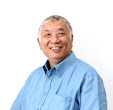Kawasaki Disease
Overview
What Is Kawasaki Disease?
Kawasaki disease is a rare condition that occurs in children. Although most with Kawasaki disease are younger than 6 years, it can occur in children of all ages and even in young adults.
It can affect many parts of a child's body, including their mucous membranes (the lining of the mouth and breathing passages), skin, eyes, and lymph nodes (part of the immune system).
Kawasaki disease can also cause problems with the heart, including:
· Inflammation of a child's blood vessels (vasculitis), especially their coronary arteries.
The coronary arteries supply the heart with blood. Inflammation can lead to enlargement of these arteries. Then a scar can form, narrowing the arteries. In the worst case, a clot can form in the arteries and block blood flow to the heart.
· Swelling of their heart muscle (myocarditis) or the sac around their heart (pericarditis)
The most serious problems from Kawasaki disease are the effects it may have on the heart and its arteries. According to the American Heart Association, Kawasaki disease affects the hearts of one in five children with the disease.
This disease is named after the Japanese doctor who first identified it in 1967, Tomisaku Kawasaki.
Kawasaki Disease in Children
Kawasaki disease is the leading cause of acquired (non-birth defect related) heart disease in children in the United States. Doctors diagnose Kawasaki disease in about 4,000 children in this country each year.
It's not clear what causes Kawasaki disease. Doctors think an infection from a virus may play a part. But Kawasaki disease does not pass from person to person, like a virus does.
About 20 in every 100,000 children get Kawasaki disease. Any child may get it. It's more common in boys and in Asian children. Most children with Kawasaki disease recover completely within weeks and do not have lasting problems. All children who've had this condition do need to be followed and have regular checkups to see if any problems develop. Some may need ongoing care for long-term issues.
Kawasaki Disease at Seattle Children's
Our heart team has treated many children with Kawasaki disease. In a typical year, we see about 40 children with this condition. We follow about 500 to 600 patients with Kawasaki disease. We have extensive experience with the diagnosis and treatment these patients require.
When you come to Children's, a team of people will take care of your child. Along with your child's cardiologist, you are connected with infectious disease specialists, rheumatologists, nurses, child life specialists, social workers and others, if their expertise is needed. We work together to meet all of your child's health needs and help your family through this experience.
Since 1907, Children's has been treating children only. Our team members are trained in their fields and also in meeting the unique needs of children. For example, the doctors who give your child anesthesia are board certified in pediatric anesthesiology. This means they have extra years of training in how to take care of kids. Our child life specialists know how to help children understand their illnesses and treatments in ways that make sense for their age. Our expertise in pediatrics truly makes a difference for our patients and families.
Symptoms & Diagnosis
Symptoms of Kawasaki Disease
Children with Kawasaki disease usually get these symptoms:
· Fever for at least five days
· Red, patchy skin rash on the trunk and around the groin
· Swelling and redness in the hands and feet, with peeling skin later on
· Bloodshot eyes
· Swollen lymph nodes in the neck
· Red, swollen, cracked lips, mouth, throat and tongue (sometimes called strawberry tongue)
Some children also get swollen joints, pain, stomachache, diarrhea and vomiting.
It's common for children to be uncomfortable and irritable because of their symptoms.
Kawasaki Disease Diagnosis
To diagnose this condition, your doctor will examine your child and check their temperature. The doctor will ask for details about any symptoms your child has, their health history and your family health history.
There is no test for Kawasaki disease.
To rule out other illnesses and to check your check your child's heart, your doctor might do tests like blood tests, electrocardiogram, echocardiography and chest X-rays.
Treatments
To reduce the risk of coronary artery problems, it's important for children with Kawasaki disease to get treatment early on.
Kawasaki Disease Treatment Options
Intravenous gamma globulin (IVIG) (a medicine given through a vein, or by IV) is the main treatment. It is effective if given within the first 10 days of the disease. About 20 percent of children do not respond to the first dose and need to get a second dose. To get this medicine, your child will need to stay in the hospital.
Your child will also need aspirin to help control symptoms like fever, rash and swollen joints. At first they will likely need high doses. Then, after their temperature is normal, the doctor will lower the dose. Your child will go home and stay on the lower dose for several weeks.
Once treatment starts, children with Kawasaki disease usually start to feel much better within about a day.
If your child has coronary artery problems from Kawasaki disease, they may need other types of care to help prevent further problems, like medicines that prevent blood clots.
New Treatments for Kawasaki Disease
Doctors at Seattle Children's are trying to find new and better treatments for Kawasaki disease. Because 20 percent of children do not respond to IVIG, they are trying different medications. Your team at the hospital may ask your permission for your child to participate in clinical research study, or clinical trial, to learn more about treating Kawasaki disease. Doctors at Seattle Children's also are searching for a way to predict which patients will not respond to IVIG. They may ask you to participate in this type of research.



No comments:
Post a Comment